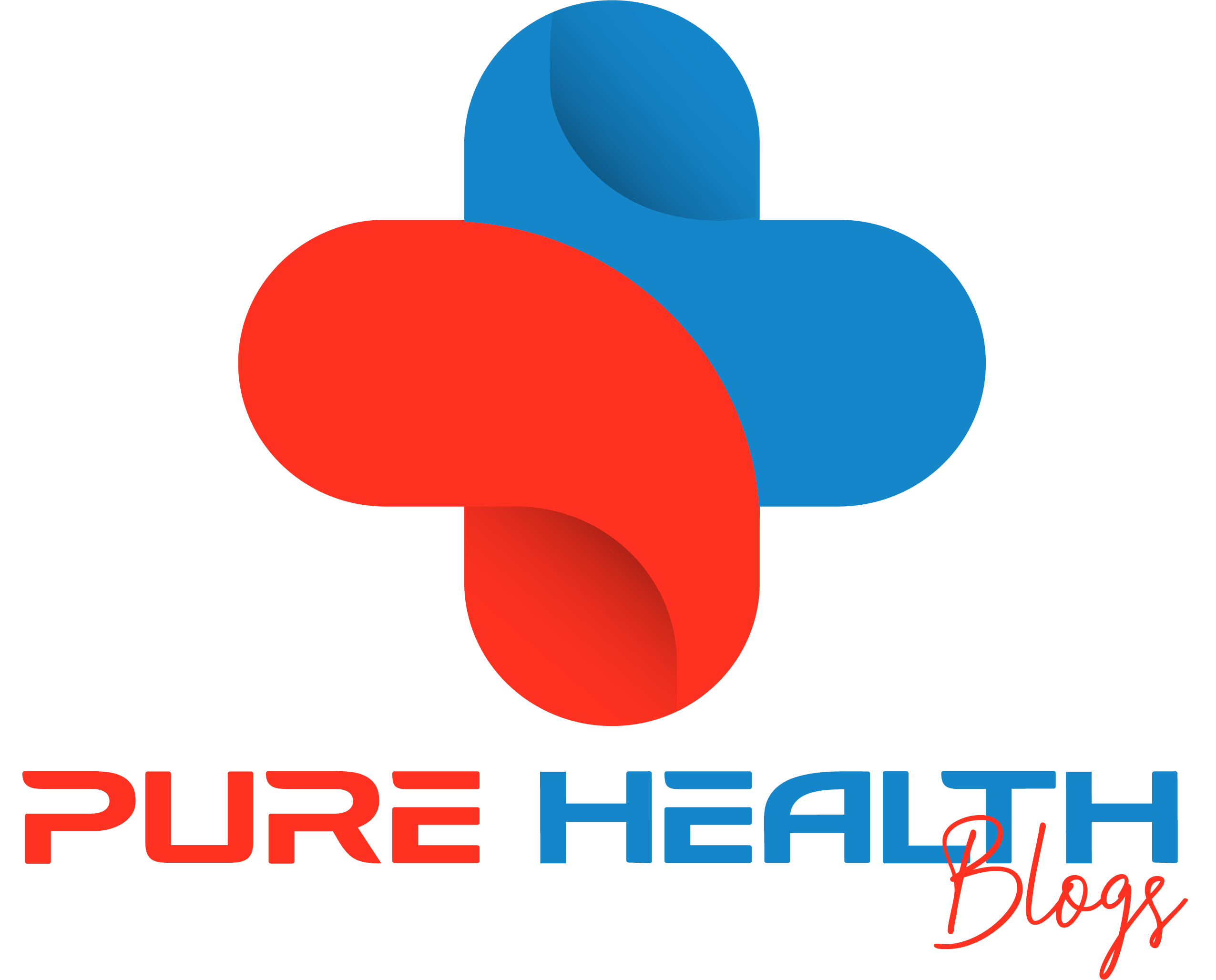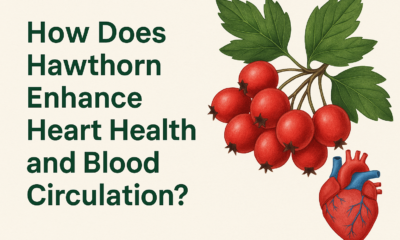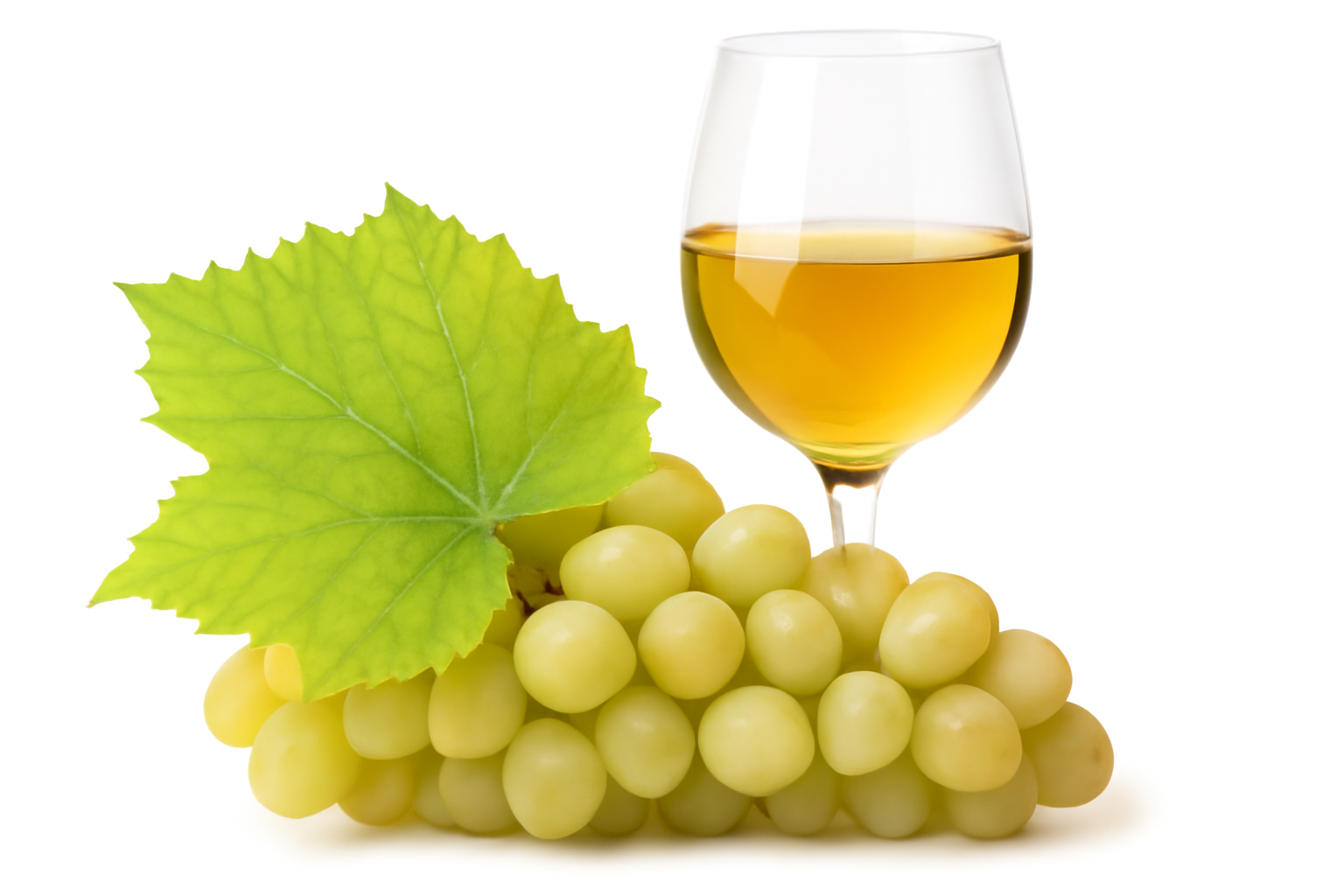General Health & Wellness
15 Powerful Herbs for Heart Health & Blood Circulation
Discover the top herbs for heart health and how they can help lower blood pressure, reduce cholesterol, and promote a healthy cardiovascular system.
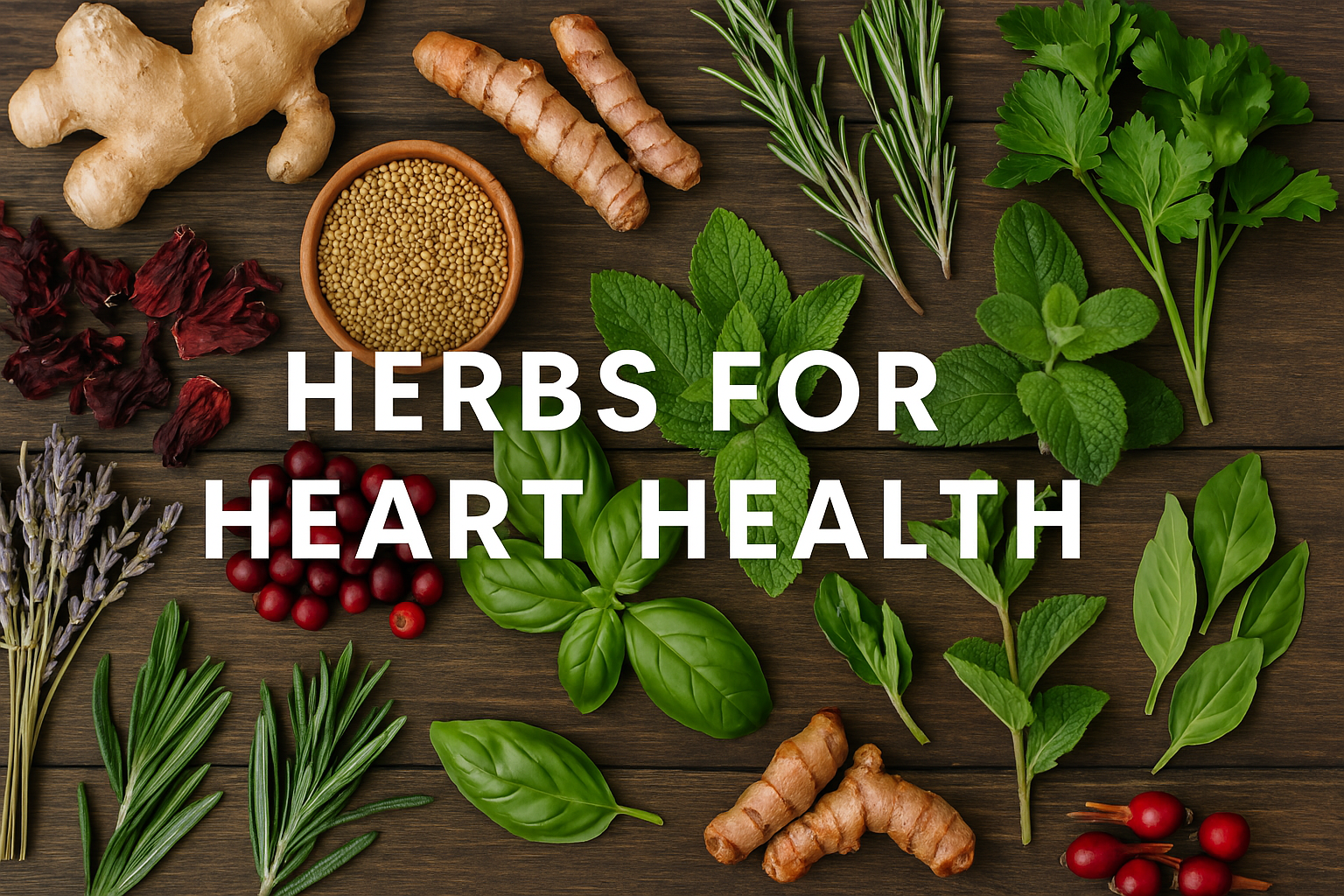
It is important that heart health is one of the most important aspects of overall well being, and something that should be, and continuously, recognized. One of the ways natural remedies can support cardiovascular function is by incorporating them into your daily routine. Herbs that are included in this because of their heart healthy properties is one such way. Hear this, in this blog we will explain the best herbs for heart health and try to support it with all the relevant scientific research done so that you can reduce your blood pressure, lower your cholesterol level, and take care of your heart.
We will also discuss how these herbs play a part in general cardiovascular health, and how to utilize them with good results. The 15 herbs to help you take care of your heart are as follows.
What you should care about health of your heart?
Just like the mind, the heart is very important for a long and fulfilling life. The organ that pumps blood around the body supplying all the parts of the body with oxygen and nutrients is the heart. If the heart is not working properly, it can cause such conditions as high blood pressure, heart disease or stroke.
Eating or otherwise living with herbs is a natural and effective way to help with heart health. Several herbs that contain bioactive compounds also are known to be good for heart health.
The Role of Herbs in Heart Health
Herbs have medicinal properties, as it has been used centuries before to cure certain illnesses but science now has provided proof to the properties of herbs. These herbs contain compounds that:
- Lower blood pressure
- Reduce cholesterol levels
- Support proper blood circulation
- Improve heart muscle function
Now, in this article, we will talk about 15 herbs that have been proven effective for heart health. However, before we start, we will first name those primary herbs for heart health that can dramatically affect your cardiovascular system in a positive way.
1. Hawthorn
It is well known that Hawthorn tree is a heart strengthening herb. Hawthorn is high in antioxidants, to which it can help prevent heart disease by promoting blood circulation, reducing inflammation as well as lowering blood pressure.
Hawthorn how helps: It reduces symptoms of heart failure; and it may lower high blood pressures.
it is available as hawthorn tea, tincture or supplement. Typically, a dose is of 300 mg hawthorn extract a day.
2. Garlic
Of the herbs for heart health, one of the most well researched is garlic. It has allicin allocated that has been proven to bring down circulatory strain, low cholesterol, and counteract blood coagulation.
Studies have shown that garlic can lower overall cholesterol as well as LDL (bad) cholesterol, while raising HDL (good) cholesterol. It also serves as blood thinner that lessens the risk of heart attack by enhancing circulation.
It can be eaten either raw or cooked. The recommended dosage for 600–1,200mg of garlic extract per day is used for therapeutic purposes.
3. Ginger
Several studies have shown that ginger is a powerful anti inflammatory herb that support heart health in several ways. Cholesterol, blood pressure, and blood circulation can be healed by it.
This is beneficial because research has shown that ginger can help to decrease blood pressure and cholesterol, both of which are risk factors for heart disease.
How to Use: Fresh ginger can be added to teas, smoothies, and in foods, and it is also available as a supplement.
4. Turmeric
Among spices, curry (turmeric) is the yellow color, and food often contains curcumin, which has extremely potent anti inflammatory, antioxidant properties. Inflammation and blood vessel function have been shown to be supported by this one.
Here’s how: Curcumin can prevent the development of arterial plaque, reduce cholesterol and decrease high blood pressure.
- Usage: Turmeric is consumed in food, tea (500-1,000 mg daily) or in capsule form.
5. Cinnamon
Not only is Cinnamon good and tasty spice but also a very potent herb for heart health. And it has other compounds to lower cholesterol, blood sugar, and serve as an aid to overall cardiovascular function.
That’s how it helps: cinnamon helps in reducing LDL cholesterol levels and hence all the former ways while incorporating it to your heart healthy diet.
- Usage: Use cinnamon in smoothies or in morning oatmeal and teas. Krill oil: The recommended amount is about 1/2 to 1 teaspoon daily.
6. Lemon Balm
Traditionally, lemon balm is an herb that is used for relieving stress and anxiety. It can also promote heart health, holding to say the least, by decreasing blood pressure and enhancing circulation.
Lemon balm helps: Studies have shown that lemon balm has been proven to have anti anxiety properties which helps in lowering stress, a major cause of heart disease.
They also can consume it as a tea or in tincture form.
7. Cayenne Pepper
This is a spicy herb, and it increases the blood circulation and helps to ensure a healthy heart. It has capsaicin which can dilate blood vessels and lower blood pressure.
Capsaicin due to benefit circulation and prevent blood clots help to prevent heart disease.
You can then add cayenne pepper to your meals or simply take it as a supplement.
8. Ashwagandha
An adaptogenic herb, ashwagandha helps the body cope with stress, which, aside from smoking and obesity, is a principal component in heart disease. Additionally, it is also known to support heart health as well as improve overall cardiovascular function.
Bad: Ashwagandha reduces the cortisol in the body, which may help save you from stress induced hypertension.
- Ashwagandha is taken as a powder or capsule, or as a tincture.
9. Rosemary
Artichokes contain folic acid, dietary fiber, which is necessary for the healthy heart and smooth digestion. Rosemary is a fragrant herb that helps augment circulation and decrease inflammation for a robust heart. In addition, it has been connected to superior cholesterol levels and general cardiovascular performance.
- It helps because rosemary has components that can reduce oxidative stress, a major factor in cardiovascular disease.
- Rosemary is also used as a spice in food or a tea.
10. Oregano
Another herb that is good for the heart is Oregano, as it helps to reduce inflammation and lower the cholesterol. The antioxidant content also protects the heart from damage.
Why it helps: Oregano has been proved to decrease concentration of cholesterol in blood and improve heart function.
- It can be used in meals, teas or as a supplement.
11. Peppermint
Although peppermint is often used to aid digestion, it has some benefits for heart health, too. It also can help to lower blood pressure and circulate blood better.
- Peppermint oil improves blood flow, which is good for heart health.
- This mint is used for therapeutic purposes: peppermint tea or essential oil.
12. Bilberry
Blueberries are similar to bilberries, which are extremely potent antioxidants. They are good for heart health as they help lower the cholesterol levels and also prevent oxidative stress.
Why it works: Bilberries have anthocyanins that can decrease the chance of coronary illness by boosting blood vessel work.
- Bilberries can be ingested in the form of supplement or powder.
13. Sage
Sage is an herb known to be helpful to overall health, including heart health. It can also help balance blood sugar, circulation as well as help to keep cholesterol levels within normal limits.
- It does so through compounds that can decrease cholesterol and inflammation, a juncture which is the root of dangerous problems.
- You can use it in cooking or prepare a tea from the dried leaves.
14. Ginseng
Ginseng is an adaptogen; herb that boosts energy, lowers stress. In this way it has been shown that it improves circulation and lowers pressure in the heart.
- What it does: Remedying the functioning of blood vessels throughout the body especially for people who suffer from hypertension and circulatory deficiencies.
- How consumed: Ginseng is purchased in tea, capsule, or tincture form.
15. Holy Basil
Tulsi or holy basil is an herb which has long had its use in traditional medicine. It also helps in reducing the stress and promote heart health.
- Holy basil anti inflammatory properties help reduce hypertension and increase heart function.
- Holy basil can be taken as a tea or as supplement.
Proper exercise is vital for the heart’s health.
Heart health is much dependent on exercise. Physical activity is also important because regular physical activity can keep the blood pressure low, circulate more easily, and reduce the risk of cardiovascular disease. Heart healthy herbs can enhance a program that includes activities like walking, running or strength training.
Call to Action
If you want to elevate your heart health, then this is the article for you. Begin drinking them today. When it comes to their effects on the heart, these Herbs for Heart Health work wonders no matter the form, tea, supplemental or food. Of course, the best results come from combining them with regular exercise.
FAQs About Herbs for Heart Health
1. What are the best herb for high blood pressure?
Garlic, hawthorn and hibiscus are some of the best herbs for high blood pressure. Therefore, these herbs dilate blood vessels and improve blood flow.
2. Can herbs help reduce cholesterol?
Of course, the herbs can be garlic, ginger, and even turmeric which help in reducing LDL cholesterol and increasing HDL cholesterol.
3. Which ones are the best herbs for heart health in general?
Some of the best herbs for total heart health include hawthorn, garlic, ginger, and turmeric, which are all natural anti-inflammatory and antioxidant herbs.
4. How exactly do herbs aid in increasing blood circulation?
Cayenne pepper, ginseng, and turmeric are herbs that can help to improve blood circulation, to dilate blood vessels, and therefore to improve blood flow.
5. How long does it take to achieve results through herbs for heart health?
But how long will it take to see benefits of heart health? The benefits vary nonetheless and it usually takes a few weeks using it consistently to see improvements.
6. Do herbs cause side effects for heart health?
Herbs are generally safe, but a doctor should always be consulted especially for those who take medication or who have other health conditions.
7. Can herbs be used in addition to the prescribed medicines?
Yes – many people will use herbs with prescription medications but always discuss this with your doctor as there may be downsides.
8. Can these herbs act in place of today’s conventional heart disease?
Herbs should be taken as adjunct to normal therapy and not as replacement therapy. Follow what your doctor advises for treating heart disease.
More Blogs:
15 Remarkable Health Benefits of Cayenne Pepper
How to Make Hawthorn Tea and 9 Impressive Health Benefits
-
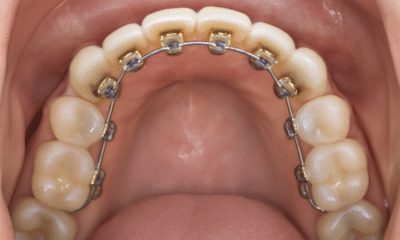
 General Health & Wellness2 days ago
General Health & Wellness2 days agoWhat Are Lingual Braces? Benefits, Costs, and What to Expect
-

 Recipes2 weeks ago
Recipes2 weeks agoHow to Make Melissa Tea at Home: A Step-by-Step Guide
-
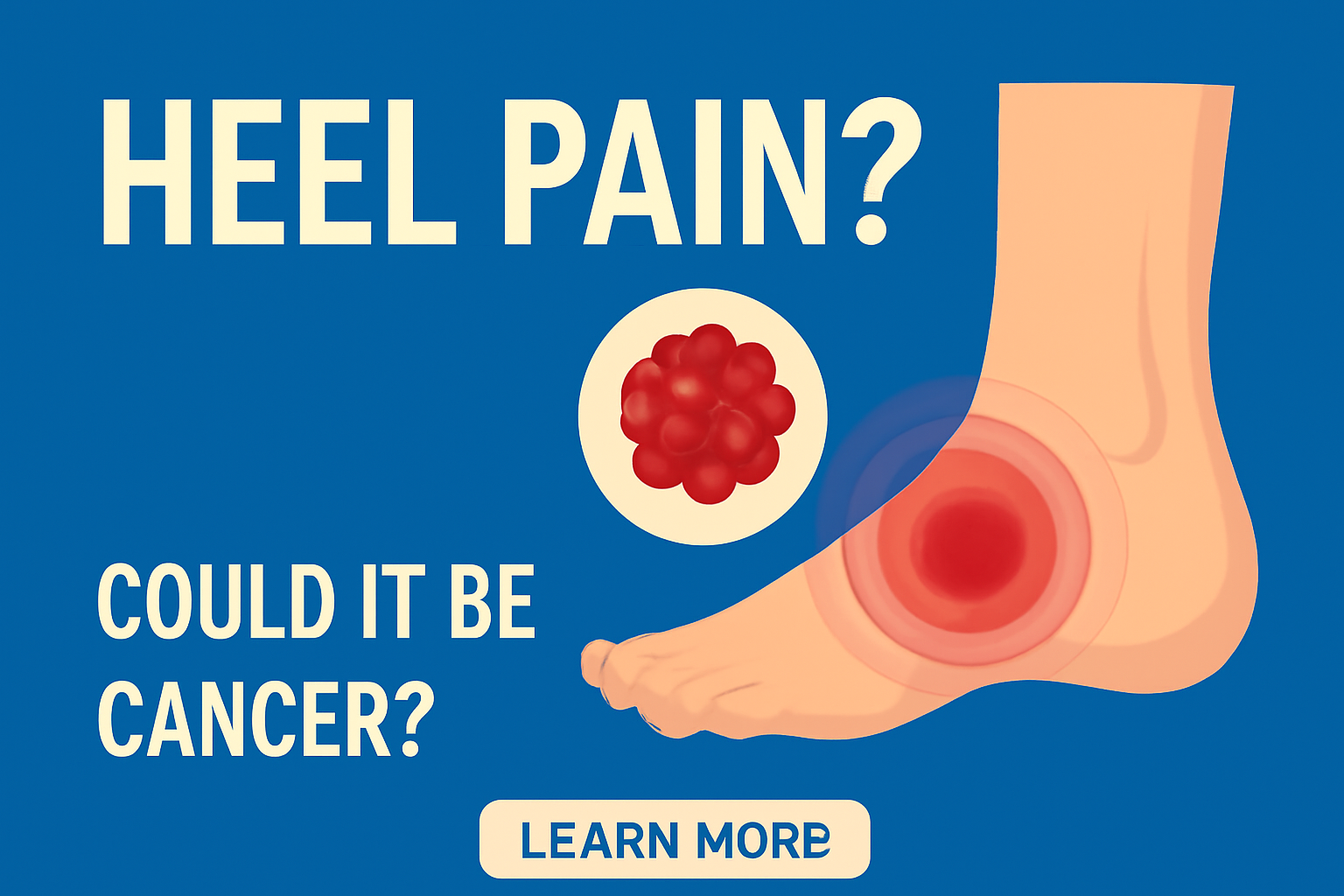
 General Health & Wellness2 weeks ago
General Health & Wellness2 weeks agoIs Heel Pain a Sign of Cancer? What You Need to Know
-

 Diet & Nutrition1 month ago
Diet & Nutrition1 month agoWhite Grapes Vs Red Grapes: Which Is Better for Your Health
-

 Recipes2 months ago
Recipes2 months agoQuick & Healthy Toddler Snacks Recipes for Busy Parents
-
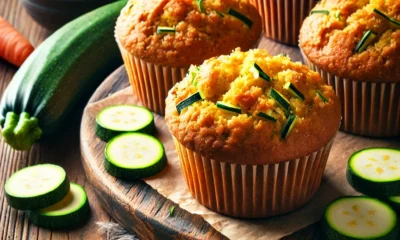
 Diet & Nutrition3 months ago
Diet & Nutrition3 months agoBest Gluten Free Zucchini Muffins: Quick and healthy bake
-
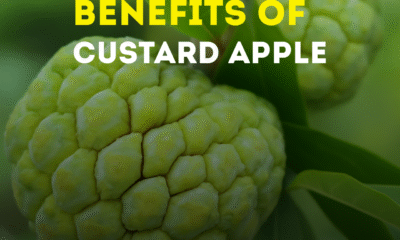
 Diet & Nutrition1 month ago
Diet & Nutrition1 month ago9 Healthy Benefits of Custard Apple in Your Daily Diet
-
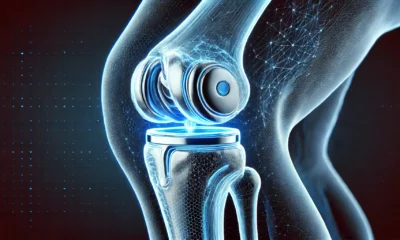
 General Health & Wellness2 months ago
General Health & Wellness2 months agoComplete Guide to Knee Replacement Surgery & Recovery

